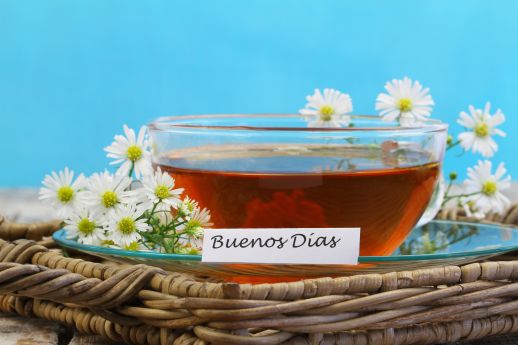There are plenty of words in Spanish for coffee, chocolate, ice cream, hot chocolate, tea and so on. Tea is not one of them. Tea is just “tea” in Spanish. The closest Spanish word to a word for tea is chamomile, but that is referring to a flower and not a beverage. This makes it hard to classify whether tea in Spanish is feminine or masculine.
The Tea Word in Spanish
Spanish doesn’t have a single word for tea. The most common names for tea in Spain are té and tisana. In Spain, you will hear both té and tisana used to refer to any type of tea. Té: pronounced [tay] is the most common way to ask for tea in Spain. It means tea, but it also can mean coffee or even a beverage made with alcohol (usually brandy). Tisane is an alternative term for a traditional herbal or medicinal drink that is not a true type of tea (i.e., green or black). Tisane typically refers to a loose leaf drink that may be sweetened with honey or sugar.

Gendering the Word Tea in Spanish
The Spanish language uses a mix of both masculine and feminine pronouns for its people and things. There are three genders in Spanish: masculine, feminine, and neutral. You can use the word that best fits a noun to determine if it’s masculine or feminine. In Spanish, the word “tea” is used for a wide variety of beverages from coffee to cold brew to water to iced tea to tea bags and more. So it’s no surprise that in Spanish, “tea” can be used for both feminine and masculine objects and words.
If you are wondering whether to use a masculine or feminine article with the word té, remember that there are two ways to make an adjective out of a noun: either by changing the noun into an adjective, or by adding an -o to the end of it. If we wanted to make té into an adjective and use a masculine article with it, we would change it into té-o. The resulting adjective would be “masculine” because when we add -o (masculine) to an adjective we make it more masculine than the original noun.
In the cases where we want to make our tea feminine in Spanish, we must change té-o into something else (an adjective). So to make our tea more feminine, we must change it into té-a. In this case, the resulting adjective would be “feminine.” Another way to remember that there are two ways to make an adjective out of a noun is to remember that the word masculine is not something that you see in Spanish very often. Masculine words in Spanish are either adjectives or nouns. Masculine adjectives and masculine nouns do not exist in Spanish. Feminine words, on the other hand, are adjectives and nouns.
To make it easy, if you’re talking about tea bags, it would be masculine, but if you’re talking about tea in general, it would be feminine.

